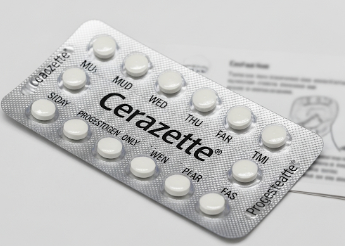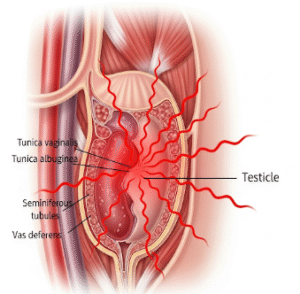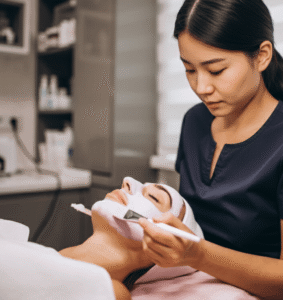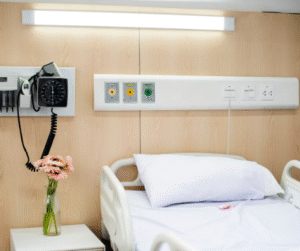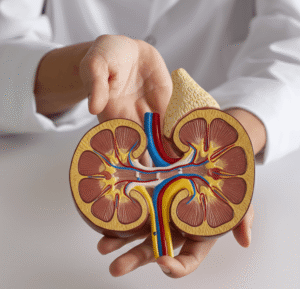What it is
The progestogen-only pill (POP), also known as the mini-pill, is a contraceptive pill containing only progestogen (a synthetic form of the hormone progesterone). Unlike combined oral contraceptives, it does not contain estrogen.
➡ Key points about POP:
- Works primarily by thickening cervical mucus, making it difficult for sperm to reach the egg
- Reduces the chance of ovulation, although in some women ovulation may still occur
- Taken daily at the same time, without a hormone-free break
- Suitable for women who cannot take estrogen, such as those who are breastfeeding or have certain health risks
💡 Important facts:
- Available in various brands and dosages in Korea
- Highly effective when taken consistently at the same time every day
- Often recommended for women with contraindications to estrogen
Why it’s done
The POP is used primarily for contraception, but it also has additional benefits for menstrual health.
➤ Medical indications include:
- Prevention of pregnancy → Highly effective when used correctly
- Breastfeeding women → Safe as it does not affect milk production
- Women with contraindications to estrogen → History of blood clots, migraines, or liver disease
- Management of menstrual symptoms → Can help reduce menstrual bleeding or dysmenorrhea in some women
➤ Key benefits:
- Safe for most women, including postpartum and older women
- Provides flexible contraception options without estrogen-related risks
- Can regulate periods in some users
- Easily discontinued if planning pregnancy
Alternatives
Other contraceptive options may be considered if POP is unsuitable or additional protection is desired:
✔ Combined oral contraceptive pill (COC) → Contains estrogen and progestogen
✔ Injectable contraceptives → Longer-acting progestogen-only option
✔ Implantable contraceptives → Effective for several years, progestogen-only
✔ Intrauterine devices (IUDs) → Hormonal or copper, long-term contraception
✔ Barrier methods → Condoms or diaphragms for added protection
Note: Each alternative has specific advantages and limitations, so consultation with a healthcare provider is recommended.
Preparation
Proper preparation ensures safe and effective use of the POP.
🔹 Medical evaluation
- Review medical history, including liver disease, breast cancer, or unexplained vaginal bleeding
- Discuss current medications, as some may reduce effectiveness (e.g., certain antibiotics, anticonvulsants)
🔹 Patient instructions
- Take the pill at the same time daily, even if periods are irregular
- Keep a pill calendar or alarm to maintain consistency
- Understand possible side effects and when to seek medical advice
🔹 Lifestyle considerations
- No dietary restrictions are usually required
- Alcohol or smoking do not affect effectiveness, but smoking is discouraged for overall health
How it’s done
The POP is administered orally, once daily.
➡ Step-by-step procedure:
- Starting the pill
- Can be started on the first day of menstruation or anytime with backup contraception for 48 hours
- Continuous daily dosing at the same time each day
- Daily intake
- Swallow one tablet with water
- Missed pill protocols:
- If less than 3 hours late, take immediately
- If more than 3 hours late, use backup contraception for 48 hours
- Monitoring effects
- Track menstrual patterns and side effects
- Consult a doctor if experiencing irregular bleeding, severe headaches, or other concerning symptoms
💡 Tips for effectiveness:
- Consistency is critical for efficacy
- Keep a backup method during start or if a pill is missed
- Inform healthcare providers of all medications or supplements
Recovery / Expected Outcomes
The POP is well-tolerated and does not require a recovery period.
🔹 Common effects:
- Irregular bleeding or spotting, particularly in the first 3–6 months
- Mild breast tenderness, nausea, or headaches
- Usually resolves as the body adjusts to hormones
🔹 Clinical outcomes:
- High contraceptive effectiveness with correct use (over 99%)
- Maintains fertility upon discontinuation
- Suitable for long-term use without estrogen-related risks
🔹 Long-term benefits:
- Continuous contraception without estrogen-related complications
- Safe for women with certain cardiovascular or thrombotic risks
- Can be combined with other reproductive health interventions as needed
Complications / Considerations
The POP is safe, but potential issues include:
⚠ Irregular menstrual bleeding → Most common in early months
⚠ Minor side effects → Headache, breast tenderness, mild nausea
⚠ Missed pill reduces effectiveness → Requires strict timing adherence
⚠ Contraindications → History of breast cancer, unexplained vaginal bleeding, or liver disease
Mitigation:
- Educate patients on missed pill protocols
- Use backup contraception if necessary
- Monitor and manage side effects with healthcare provider guidance
Treatment Options in Korea
The POP is widely available in hospitals, clinics, and pharmacies across Korea.
🏥 Providers:
- Seoul National University Hospital (SNUH) → Family planning services with POP counseling
- Asan Medical Center → Contraceptive options including POP and follow-up
- Samsung Medical Center → Reproductive health clinics with POP prescriptions
- Local pharmacies → Over-the-counter or prescription-based POP depending on brand
💰 Insurance and cost:
- National Health Insurance may partially cover contraceptives for specific indications
- Private payment may apply depending on brand and clinic
- Costs vary by duration of supply and formulation
🔹 Additional support:
- Counseling for correct usage, side effect management, and reproductive planning
- Integration with other contraceptive methods or fertility planning
- Follow-up visits to assess effectiveness and tolerance
Conclusion
The Progestogen-Only Pill in Korea is a safe, effective, and convenient contraceptive option for women who:
- Cannot take estrogen
- Are breastfeeding
- Prefer daily oral contraception without hormone-free breaks
By following the daily regimen and monitoring side effects, women can achieve:
- High contraceptive efficacy
- Flexibility and control over reproductive health
- Safe, reversible, and long-term contraception

